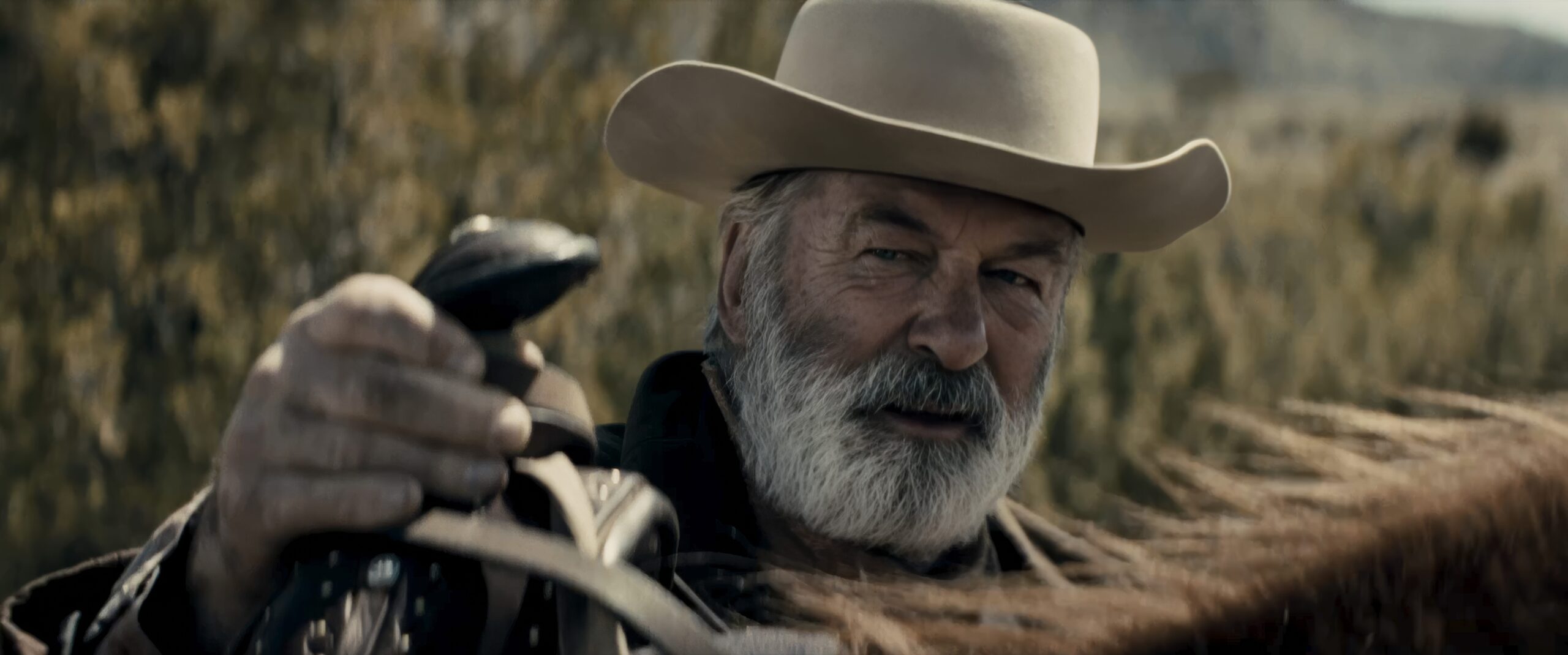
"Rust": A Western Haunted by Echoes, Redemption, and Resilience
The release of "Rust" arrives not merely as another addition to the Western genre, but as a poignant and complex cinematic event. The film’s narrative tapestry, woven with themes of family, redemption, and the stark realities of survival in the Old West, is indelibly marked by the tragic loss of cinematographer Halyna Hutchins on set three and a half years ago. While the screen crackles with the expected gunfights and showdowns, it’s the echo of that single, devastating shot that lingers most profoundly, casting a shadow over the entire production.
Director Joel Souza, himself wounded in the same incident that claimed Hutchins’ life, has brought "Rust" to completion after years of legal battles, criminal charges, and immense emotional turmoil for all involved. The final product, rated R and now available in theaters and on demand, presents a sturdy, if somewhat protracted, story that should resonate with fans of Western-themed dramas like "Yellowstone" and "Horizon." However, "Rust" truly distinguishes itself through its visual artistry, a captivating blend of light and shadow, and the stunning vistas meticulously captured by Hutchins and her successor, Bianca Cline.
Set in 1880s Wyoming, the narrative follows Lucas Hollister, a resilient 13-year-old orphan portrayed with remarkable maturity by Patrick Scott McDermott. Lucas is struggling to provide for his younger brother, forced to sell off prized possessions just to keep food on the table. A tragic altercation leads to an accidental killing, and Lucas finds himself sentenced to hang. As the gallows are erected outside his jail cell, a figure from his past emerges: his estranged grandfather, Harland Rust, an infamous outlaw played by Alec Baldwin.
Harland, believed to be dead, arrives to break Lucas out of jail, leaving a trail of bodies in his wake. The revelation of his grandfather’s existence is a shock to Lucas, who has been forced to grow up quickly in a harsh world. The unlikely duo embarks on a perilous journey to Mexico, their bond slowly forming amidst the constant threat of danger. Harland, a hardened and cynical man, imparts his survival wisdom to the youngster, urging him to focus on the present moment: "There’s alive and there’s ain’t. Try to focus on the former."
As Lucas and Harland flee, a bounty is placed on their heads, attracting the attention of a particularly ruthless and unhinged bounty hunter known as Preacher, embodied with chilling intensity by Travis Fimmel. Adding another layer of complexity is U.S. Marshal Wood Helm, played with understated depth by Josh Hopkins. Helm is tasked with tracking down Harland, but his dedication to duty is tempered by the struggle of leaving behind his ailing son.
The film unfolds with a deliberate pace, punctuated by moments of intense action and interspersed with subplots and supporting characters that enrich the narrative tapestry. Baldwin delivers a compelling performance as Harland, his world-weary demeanor and gruff exterior gradually revealing the layers of a complex and haunted past. The chemistry between Baldwin and McDermott is palpable, their evolving relationship forming the emotional core of the film. McDermott shines as Lucas, a boy forced to confront the harsh realities of life far too soon, while Hopkins brings a quiet strength and moral ambiguity to the role of Marshal Helm.
The fact that "Rust" was ultimately completed after the tragedy is a testament to the resilience and dedication of the cast and crew. The production faced significant challenges, including scheduling conflicts that necessitated the recasting of major roles. McDermott and Hopkins stepped into the roles previously held by Brady Noon and Jensen Ackles, seamlessly integrating themselves into the existing framework. Bianca Cline, handpicked by Souza, took on the daunting task of completing Hutchins’ work as director of photography.
It would be presumptuous for an outside observer to attempt to definitively distinguish Hutchins’ contributions from Cline’s. Instead, it is more fitting to celebrate the exceptional cinematic vision that permeates "Rust." The film is replete with sweeping widescreen vistas and a masterful use of shadows, creating a visually stunning and emotionally evocative experience.
One particularly striking early scene depicts Lucas at his parents’ graves, viewed from a distance, conveying a sense of profound loss and isolation. Similarly, the introduction of Baldwin’s character is shrouded in darkness, his presence looming as an unseen force until he reveals himself to both Lucas and the audience. While horseback riding is a common trope in Westerns, "Rust" elevates these moments through careful composition and lighting, capturing the melancholic mood against the backdrop of dusky skies and brooding cloud formations.
The film is haunted by uncanny echoes of real life. The narrative hinges on an errant bullet and an accidental shooting death, mirroring the tragic circumstances surrounding the film’s production. Furthermore, the story explores the consequences of violence, a theme that resonates with particular weight given the events that transpired on set. It is significant that Souza made the difficult decision to remove the scene that was the setting for Hutchins’ death, a gesture of respect and sensitivity.
Like "The Crow" or "Twilight Zone: The Movie," "Rust" is destined to be forever intertwined with the memory of a fatal day. While the film may not be perfect, it represents an attempt to find beauty and meaning in the face of tragedy, a testament to the enduring power of art and the resilience of the human spirit. The dedication to Hutchins and the inclusion of her saying, "What can we do to make this better?" at the end, serve as a poignant reminder of her legacy and the collective determination to honor her memory.
